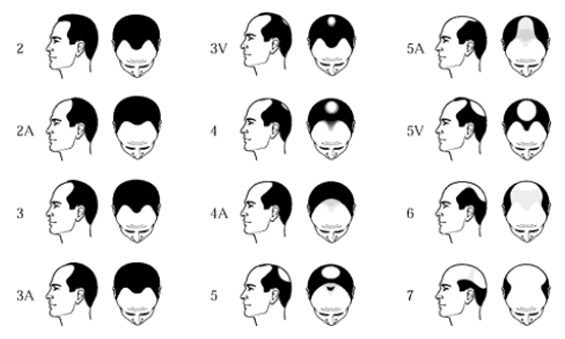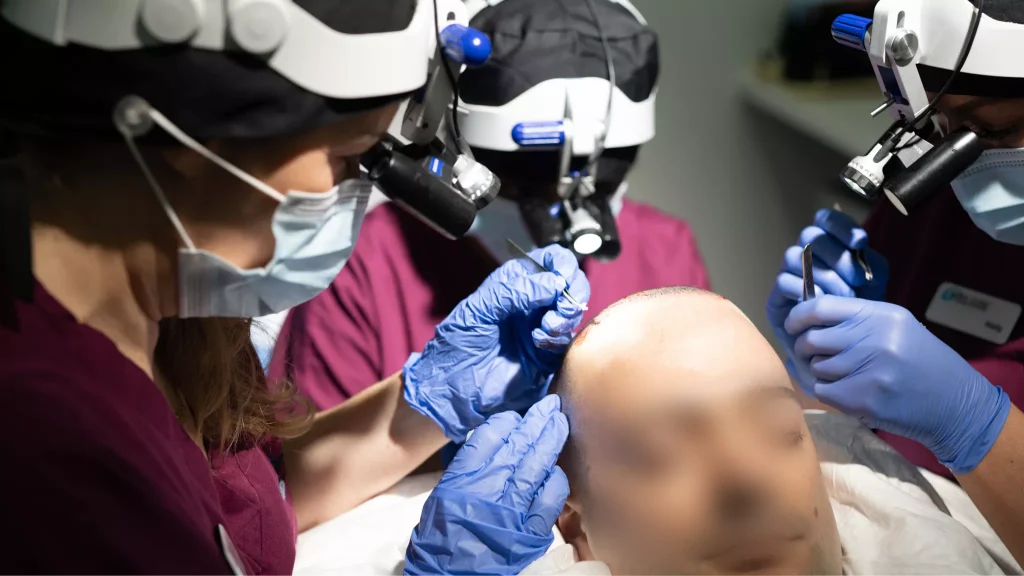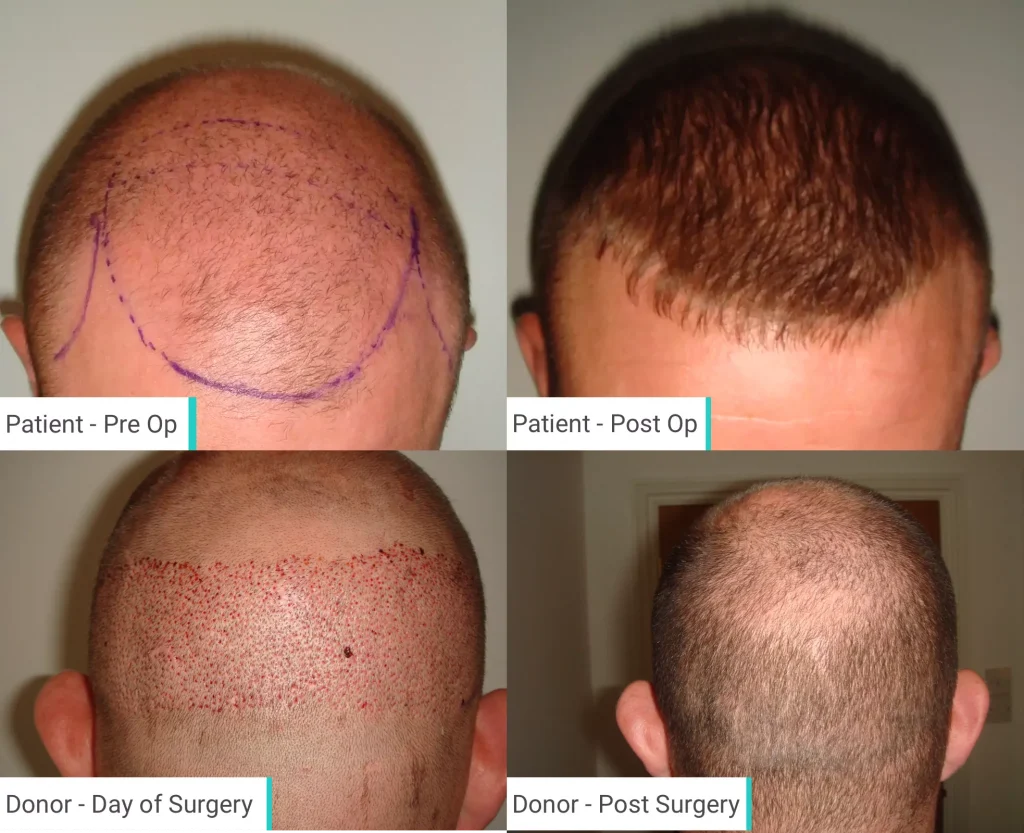Hair Transplant Surgery
At Crown Clinic, we specialise in hair transplant procedures for both men and women. Contact us today for more information about our hair loss treatments and how we can assist with your hair transplant journey.
Hair Transplant & Restoration
Modern techniques have enabled advanced methods to help restore hair with women and mens hair transplants. These techniques can also replace or reshape hairlines with your own natural, growing hair. They require no more care than the ordinary washing, styling and trimming.
Hair transplant procedures are so advanced that often barbers and hair stylists cannot tell the difference between naturally growing hair and the grafts that have been placed.


Who can benefit from hair transplant surgery?
Anyone who has experienced permanent hair loss may be a candidate for hair transplant surgery, including:
- Men with male pattern baldness
- Women with female pattern hair loss
- Men or women who want to restore or change the shape of their hairline
- People with areas of scarring from injuries or “scarring” skin diseases
- Patients who experienced some hair loss after surgery, such as face lift procedures
- People who want to thicken or restore eyebrows, eyelashes, and beards
- Men and women who want hair in an area where they have little or no hair

Expert hair transplant surgery by Dr Shahmalak
The hair transplant surgery process
Hair transplant procedures involve removing permanent hair-bearing skin from the back and/or sides of the scalp (donor area).
Then, using stereoscope microscopic dissection, the tissue is dissected into follicular unit grafts (containing 1-4 hairs) and multi-follicular unit grafts (containing 3-6 hairs each). These microscopic grafts are then meticulously planted into the bald or thinning area of the scalp (recipient area). This is done to avoid injuring any follicles already existing in the area.
The creation of microscopic follicular unit grafts enables the hair surgeon to create very natural, feathered hairlines. Some surgeons prefer to transplant exclusively with follicular unit grafts, while others feel that placing the multi-follicular unit grafts into the central areas of the scalp allows them to better create central density.
Depending on the degree of balding in the frontal, mid-scalp, and vertex (crown) areas, usually 2-3 procedures are performed.
Today, women and mens hair transplant surgery is remarkably well tolerated. Within 24 hours, small crusts will form on each graft that are then shed in approximately 4-14 days. The grafted hairs will often start to grow 10-16 weeks after the procedure and will continue to grow for most, if not all, of one’s life.

Frequently Asked Questions
Crown Clinic has put together some of our most frequently asked questions about hair loss and hair transplants.
Hair transplant surgery is a very safe, relatively minor surgical procedure.
Following your hair transplant procedure, there is usually little or no discomfort in the grafted area. Most patients feel some “tightness” in the donor area for 1-2 days and are prescribed a mild analgesic to help cope with this. Patients may be asked to use sprays and to sleep in a semi-upright position for 2-3 days following the procedure to minimise swelling and bruising.
Small crusts may form on each graft, and these can usually be camouflaged by any existing hair that can be combed over the recipient area. Numbness that may occur in the donor or recipient area usually disappears within 2-8 months following surgery.
Complications with women and mens hair transplants are rare. This is why it’s vital that you consult with an experienced surgeon for your procedure. Minor inflammation can sometimes happen around a transplanted hair follicle. This is similar to an infected ingrown hair or pimple, but it usually responds to warm compresses.
The scar that occurs in the donor scalp is usually quite narrow and can be hidden by surrounding hair. The graft sites in the recipient frontal area heal with minimal scarring and are covered by the transplanted hair. A minority of patients may experience mild swelling in the forehead area for a few days following surgery. It typically appears around the 3rd post-op day and goes away after 3-4 days.
We advise beginning medical treatment of significant hair loss as soon as the problem has been identified.
Patients may have a hair transplant surgery at any age after their mid 20’s. However, the decision for any given patient may be different, depending on a number of factors. The vast majority of hair transplant patients in the UK tend to have their first procedure while they aren’t bald.
Medical treatments such as propecia and minoxidil are usually recommended for men with hair loss. This is to help preserve or partially reverse thinning hair in the crown.
Contact us at Crown Clinic, as we will work with you to design an individualised plan to fulfil your specific needs.